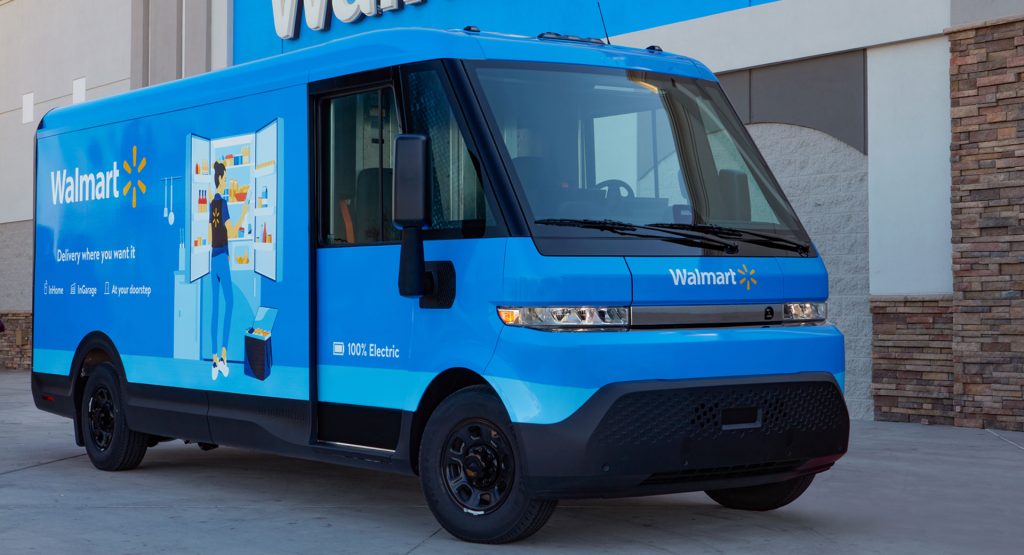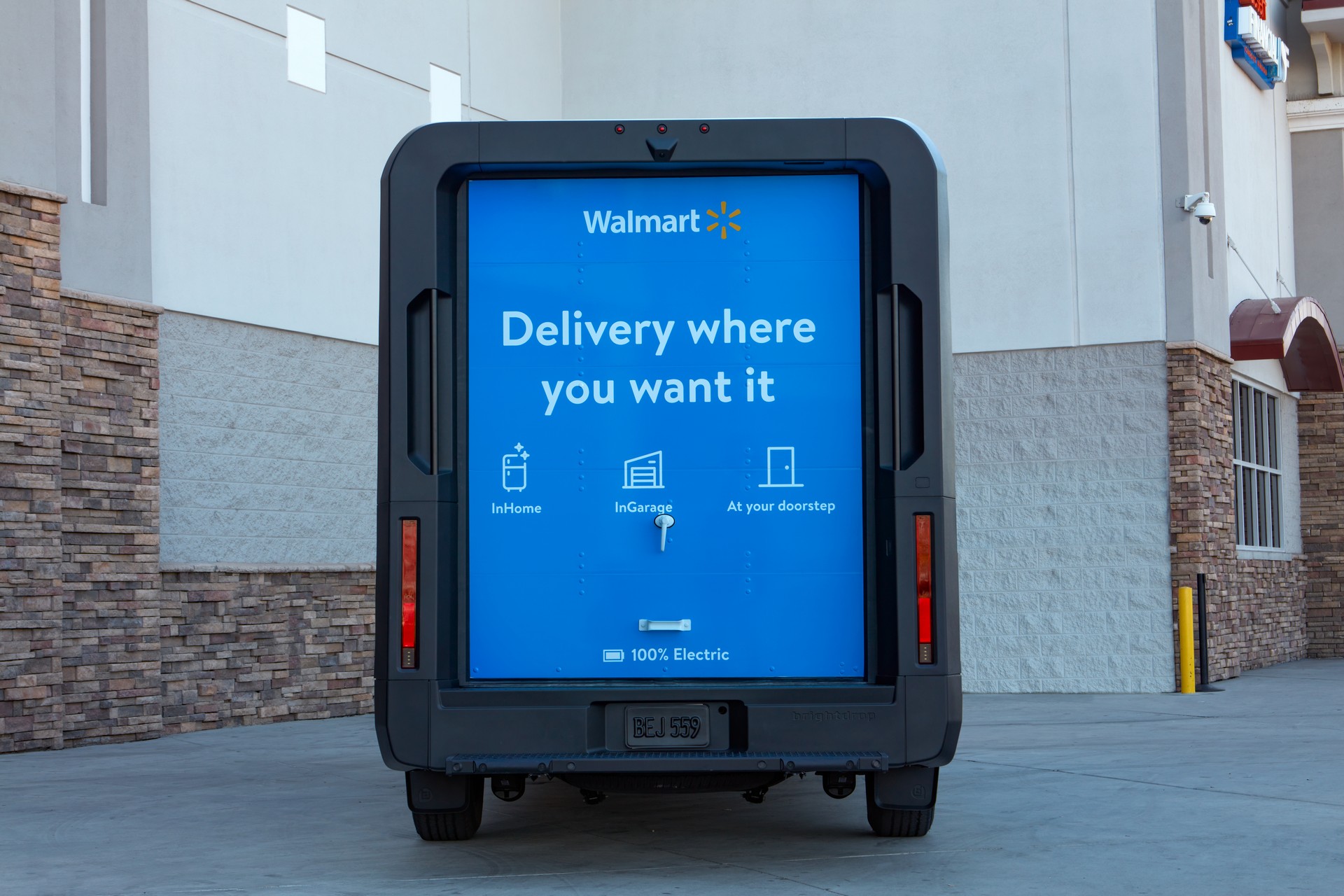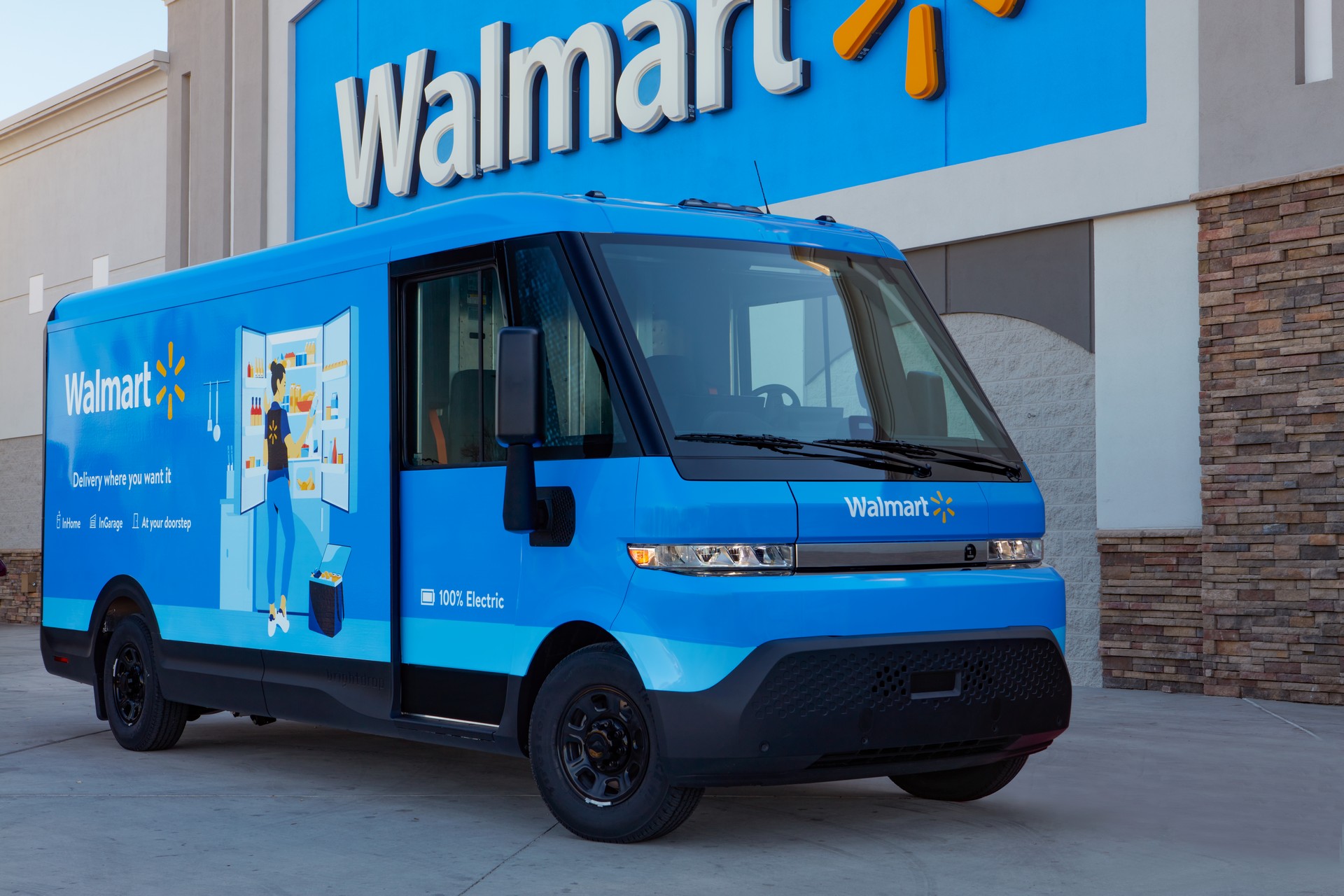E-commerce is a juggernaut that cannot be stopped and there will soon be over 100 million packages delivered daily in the United States. To meet the demand, companies are turning to a new generation of delivery vehicles and they’re increasingly electric.
One of the standouts in this arena is GM’s BrightDrop, which burst onto the scene less than a year ago and has already delivered its first electric vehicles to FedEx.
The company is keeping that momentum going as they’ve used CES to announce an agreement with Walmart and an expanded partnership with FedEx.
Also Read: GM’s New BrightDrop Unit Eyes Delivery Companies With EV600 Electric Van
Walmart signed an agreement to reserve 5,000 units of BrightDrop’s EV600 and EV410 delivery vans, which will be used as part of their InHome delivery service. InHome delivery is currently available to around six million U.S. households, but Walmart aims to expand its availability to 30 million households by the end of the year.
To support the increase, Walmart will hire more than 3,000 delivery drivers and “equip them with an all-electric fleet of delivery vans to support the retailer’s goal of operating a 100 percent zero-emissions logistics fleet by 2040.” However, this won’t happen overnight as BrightDrop’s electric delivery vans won’t enter Walmart’s fleet until 2023.
In regards to FedEx, the company has signed an agreement for an additional 2,000 delivery vans. They’ll be delivered over the “next few years” and are on top of their initial reservation of 500 units.
During a press briefing yesterday, FedEx’s Executive Vice President and Regional President of the Americas, Richard Smith, poured on the praise as he described the EV600 as “tremendous” and said the company was “very excited” that GM got into the delivery vehicle market. He went onto note that unlike some startups, BrightDrop vehicles are “real” and currently in production. Smith added FedEx loves them and wants a lot more of them.
Speaking of which, FedEx is looking to add 20,000 BrightDrop EVs to their fleet in the future. However, this is “subject to further negotiations and execution of a definitive purchase agreement.”
FedEx’s interest isn’t surprising as BrightDrop has previously said fleet companies can expect to save approximately $7,000 (£5,172 / €6,200) annually with the EV600 when compared to a similar diesel-powered vehicle. There’s also the obvious environmental benefits and this is a win-win scenario.
The company isn’t just interested in BrightDrop’s delivery vans. Following successful tests of the EP1 electrified container in Toronto and New York City, FedEx is expanding the pilot program to ten additional markets beginning this year.
The EP1 helps to move goods over short distances and it allowed FedEx to see a 25 percent increase in package deliveries per day in the Toronto test. In New York, the electrified container enabled “FedEx Express couriers to increase package deliveries by 15 percent per hour, remove one on-road vehicle from the delivery route and cut delivery vehicle curbside dwell time in half, when used on routes in a high-density, vertical urban environment – all while reducing physical strain on couriers.”
BrightDrop has already received tens of thousands of reservations and they can’t build EVs fast enough to meet demand. However, they expect to ramp up production in the future and have previously said “large-scale production” of the EV600 will begin this November. The smaller EV410 will then follow in 2023.
BrightDrop also hinted at additional variants during yesterday’s briefing as President and CEO Travis Katz revealed larger delivery vehicles are currently being examined. While the company wasn’t ready to announce anything specific, we can expect to learn more in the future.
In a statement, Katz said “BrightDrop’s mission is to decarbonize the world’s deliveries” and “today’s commitments showcase our ability to power the electrification journey of some of the world’s biggest companies.” He added, BrightDrop is leveraging the “best of two worlds – the innovation, agility, and focus of a technology startup with the engineering and manufacturing might of General Motors.”


















